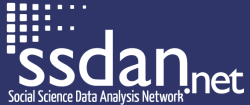Skill- After using this module, students will gain skills in:
Using software to access and analyze census data Identifying independent and dependent variables
Forming testable hypotheses using quantitative data
Employing control variables
Quantitative writing
Learning how to construct, read, and interpret bivariate tables displaying frequencies and percentages
Using real world data to enhance and support key course concepts
Substance- We will answer the following questions:
What is the distribution of poverty, how has it changed over time, and how is it defined?
What social variables are related to poverty?
What are some possible explanations for poverty?
This exercise for a Social Problems class and examines the relationship between income and poverty.
In addition to a quantitative analysis that involves univariate, bivariate, and multivariate analysis, this module reinforces research terms introduced in Intro to Sociology (independent, dependent and control variables and includes the opportunity to discuss sample vs. population (in the comparison of national poverty data vs. the poverty rate in the sample) and value vs. variable (poverty as a value and a variable and the recoding of the values in the household data). The module also uses the Census website to define the concept "poverty threshold" and look at trends in poverty. Together this reinforces basic components of social science research and analysis in preparation for upper-level classes, including research methods and statistics.
This activity uses two customized datasets made from the 2000 Census and guides students through data manipulation using WebCHIP software found at DataCounts!. To open WebCHIP with the dataset for the activity, please see instructions and links in the exercise documents under teaching materials. For more information on how to use WebCHIP, see the How To section on DataCounts!.
Original Archive Module: https://ssdan.web.itd.umich.edu/sites/default/files/PovertyinUS_Origina…
